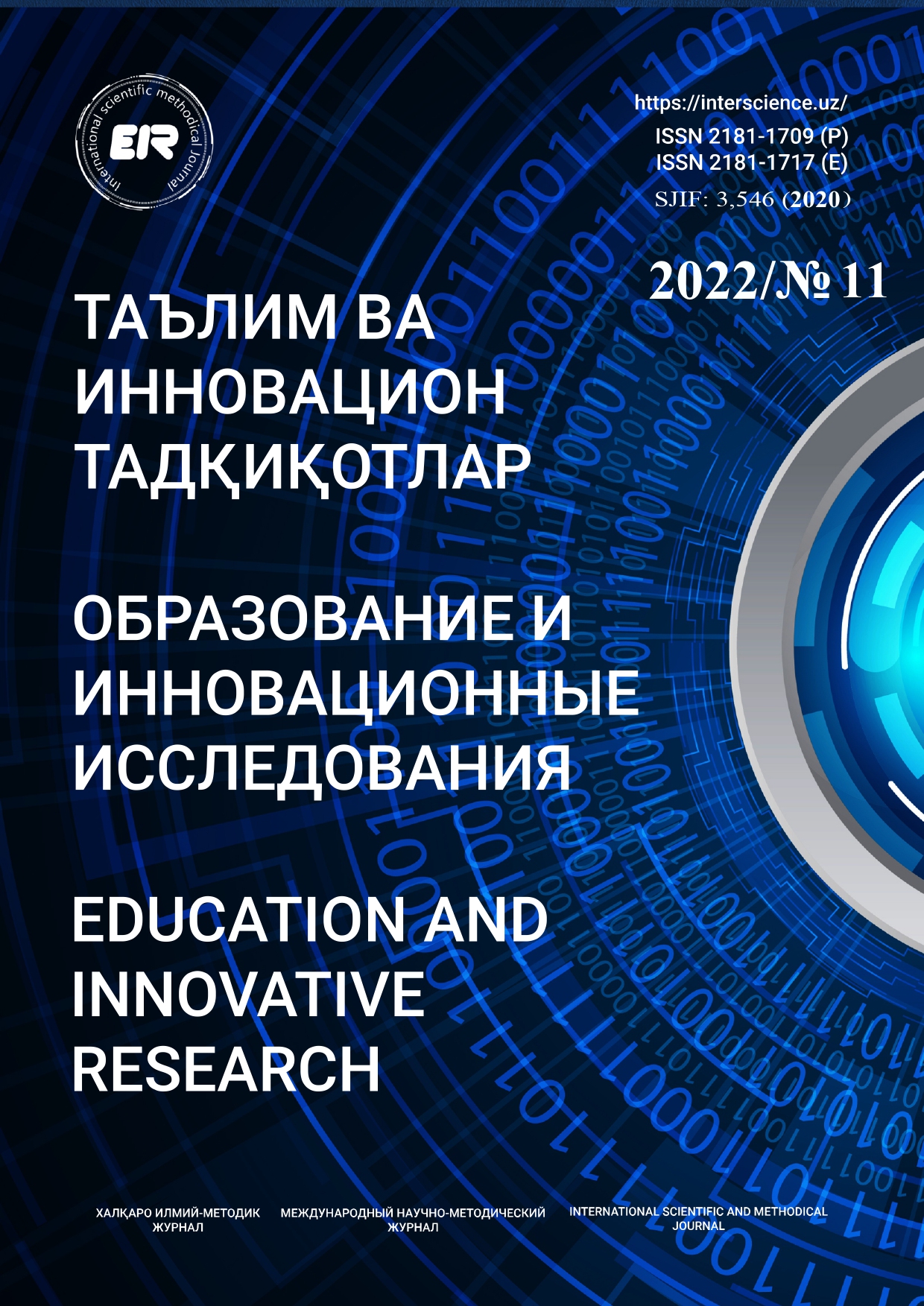МЕТОДИКА ПРЕПОДАВАНИЯ НАЧЕРТАТЕЛЬНАЯ ГЕОМЕТРИЯ И ИНЖЕНЕРНАЯ ГРАФИКА НА ОСНОВЕ ТЕХНОЛОГИИ “UBIQUITOUS LEARNING”
Жураев Акмал Раззакович Профессор кафедры «Технологическое образование» Бухарского государственного педагогического института, д.ф.п.н. (PhD) Тураев Хумойиддин Абдугафорович Заведующий кафедрой “Изобразительного искусства и инженерной графики” Термезского государственного университета
Ключевые слова:
инновации, образовательная технология, “ubiquitous learning”, метод, инструмент, дистанционное обучение, 3D анимация, видеодары, мобильное приложение, творческая материя, визуальный графический образ, социальные сети.Аннотация
В данной статье представлены практические вариации с методологической основой для разработки и внедрения новой образовательной среды, которая обеспечивает учащимся графическое, эффективное и интерактивное обучение, где бы они ни находились, посредством эффективной организации уроков рисования на основе инновационной образовательной технологии «Ubiquitous Learning» (повсеместное обучение). В нем также содержится аргументированная информация о форме, методах и инструментах, которые потребуются при применении технологии.
Библиографические ссылки
T. Uemukai, T. Hara and S. Nishio, “A method for selecting output data from ubiquitous terminals in a ubiquitous computing environment,” in Proc. of the 24th Int. Conf. on Distributed Computing Systems Workshops (ICDCSW’04), Tokyo, Japan, pp. 562-567, 2004. 2. T.Z. Yang, F. R. Kuo, J.G. Hwang and H.C. Chu, “A computer assisted approach
for designing context-aware ubiquitous learning activities”, in Proc. of IEEE Int. Conf. on Sensor Networks, Ubiquitous and Trustworthy, Taichung, Taiwan, pp. 1-8, 2008. 3. K. Liyytinen and Y. Yoo, “Issues and challenges in ubiquitous computing,” ISSN 2181-1717 (E) Образование и инновационные исследования (2022 год №11)
http://interscience.uz 217 Communications of the ACM, vol. 45, no. 12, pp. 62-65, 2002. 4. G.J. Hwang, C.C. Tsai and S.J.H. Yang, “Criteria, strategies and research issues of context-aware ubiquitous learning,” Educational Technology & Society, vol. 11, no. 2, pp. 81-91, 2008. 5. Turayev X.A. et al. METHODICAL RECOMMENDATIONS ON THE IMPLEMENTATION OF THE THEME OF FORTY IN DRAWING LESSONS GRAPHICALLY //Science and Education. – 2021. – Т. 2. – №. 2. – С. 264-268.
H. Ogata and Y. Yano, “Context-aware support for computer-supported ubiquitous learning,” in Proc. of the 2nd IEEE Int. Workshop on Wireless and Mobile Technologies in Education, JungLi, Taiwan, pp. 27-34, 2004.
O.K. Boyinbode and K.G. Akintola, “A sensor-based framework for ubiquitous learning in Nigeria,” IJCSNS International Journal of Computer Science and Network Security, vol. 8, no. 11, pp. 401-405, 2008. 8. Khumoyiddin T. IMPROVING THE DEVELOPMENT MODEL OF PROJECT COMPETENCE OF FUTURE DRAWING TEACHERS //Universum: технические
науки. – 2022. – №. 2-6 (95). – С. 62-65. 9. A.R. Jo‘rayev, “Bo‘lajak texnologiya fani o‘qituvchilarini kasbiy tayyorlashda
dasturlashtirilgan vositalardan foydalanishning didaktik imkoniyatlari”. Zamonaviy ta’lim va tarbiyaning dolzarb muammolari. Elektron jurnal. – Urganch. 2019-1. 10. Zhuraev А.R. Research methodology background to the optimization of labour and professional training curriculum in secondary education // International scientific journal. № 7 (35) / Russia Volgograd. International scientific journal. № 7 (35) / Russia Volgograd. Impact factor of the journal “Science and world” – 0.325 (Global Impact Factor 2013, Australia) 2016. P. 70-71.





